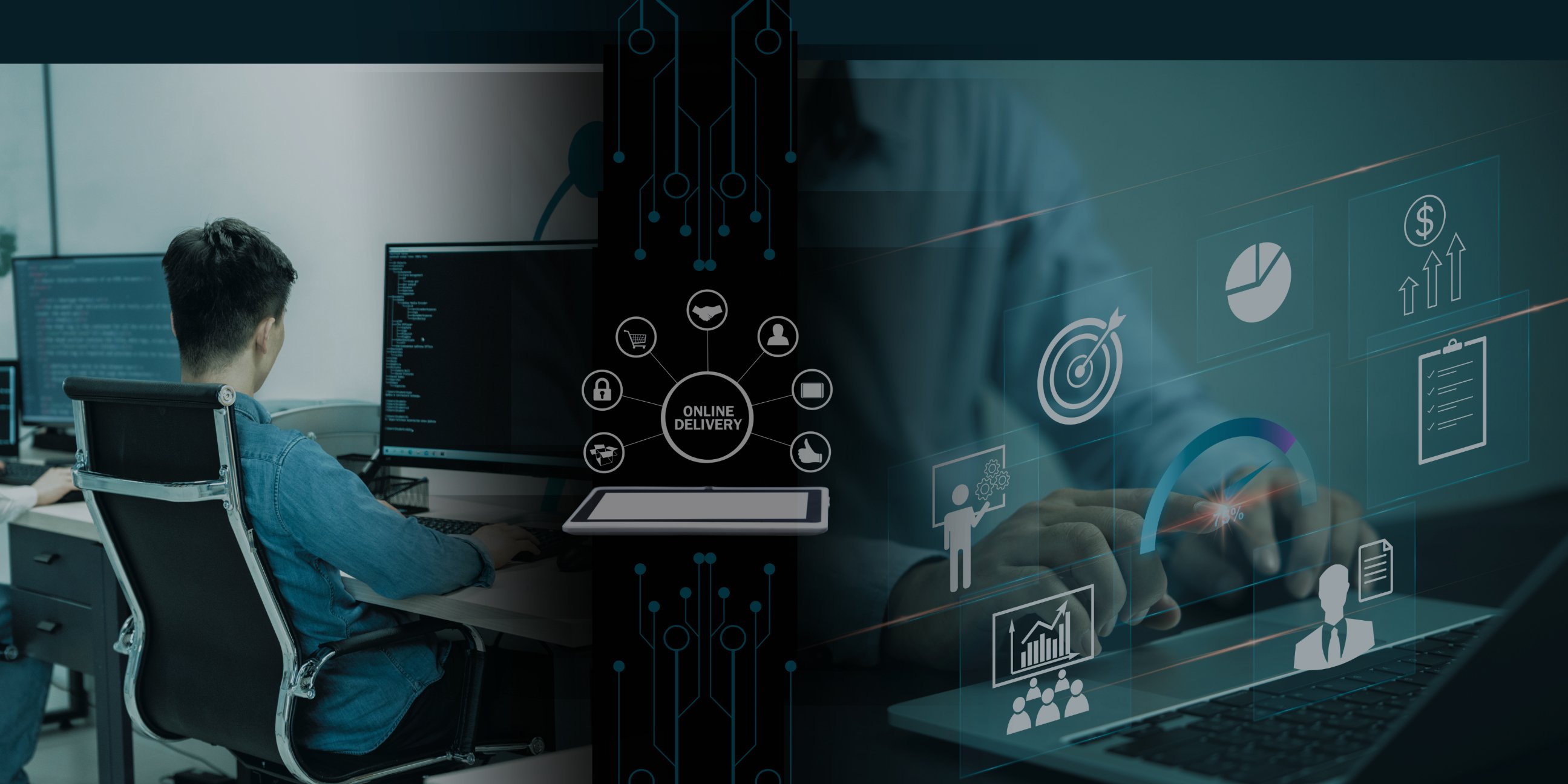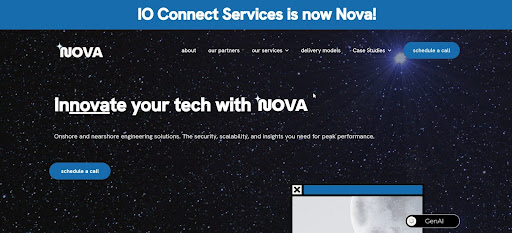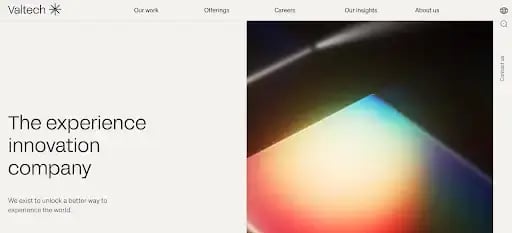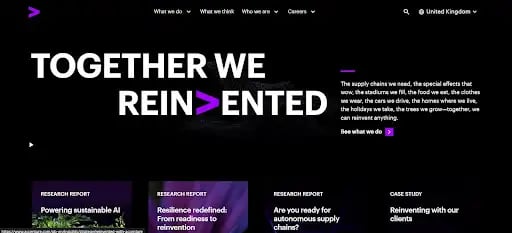The 10 Best Observability & APM Agencies for Enterprise eCommerce Teams
July 28, 2025

Unresolved latency, failing API calls, and silent errors typically go unchecked until they impact revenue. You probably already know how hard it is to trace incidents across distributed systems when your observability setup falls short. The truth is that siloed data and limited tooling leave you reacting instead of preventing.
That’s why choosing the right partner for application performance monitoring and full-stack visibility matters. In this article, we’ll compare the leading agencies, weigh trade-offs, and see who’s built to support your eCommerce scale.
Let’s start with what these consulting services actually do.
What Are Observability & APM Consulting Services for eCommerce?
Observability and APM consulting services help you monitor, analyze, and improve every part of your digital commerce stack, from the frontend storefront to backend services and database queries.
These services combine engineering expertise with the right tools to provide clear visibility into system behavior, track response times, and surface patterns before they impact performance. You get support with implementing dashboards, alerting, and distributed tracing so teams can move faster and with more accuracy.
Growth in this space is accelerating. According to Market Research Future, the full-stack observability market is projected to jump from $8.56 billion in 2025 to $49.26 billion by 2034. That’s a signal that many leaders like you are prioritizing stack visibility to protect both revenue and reputation.
Before comparing providers, let’s see where observability ends and APM begins, since the two usually overlap but serve different goals.
Observability vs. APM: What’s the Difference?
Observability gives you a full picture of system health by collecting and analyzing logs, metrics, traces, and events. APM focuses more narrowly on how individual apps or services behave.
Normally, observability helps your team understand why something is failing, especially across distributed systems. It connects symptoms to root causes, unlike surface-level alerts.
And according to 451 Research, observability platforms identify issues about 20% faster and resolve them 15% quicker than legacy tools. That’s a clear advantage when every second of latency can affect revenue.
Contrast that with APM, which tracks performance metrics, error rates, and transaction speeds to surface slowdowns or downtime.
But both types of tools are important. The key difference comes down to scale and scope, and together they help you improve visibility and speed up your response time.
For a more visual representation of the difference between observability and APM, check out this YouTube video:
Next, let’s look at what you actually gain when these two work in sync.
Why Do You Need Observability & APM Consulting for eCommerce?
Performance issues frustrate users and directly impact revenue. As you know, digital teams in commerce operate under high stakes. Even a small delay creates a chain reaction across user experience, conversions, and retention.
That’s because slow sites can bounce users and even lose them forever. In fact, one study found that cutting page load by just one second can improve conversions by 5.6%.
But when load times stretch too far, the losses add up fast. Cart abandonment can jump by 75% on slow pages, and more than half of mobile visitors will leave if wait times cross the three-second mark.
Of course, speed and page load time are just one part of what observability and APM consulting are about. Here’s why working with the right consulting partner pays off:
- Reduce revenue loss from slowdowns, errors, or downtime.
- Improve conversion rates by optimizing performance across the full stack.
- Detect and fix issues before they affect customers.
- Provide unified visibility across frontend, API, and backend systems.
- Support compliance, security, and operational SLAs.
- Enable data-driven decisions for scaling and architecture improvements.
- Accelerate incident resolution and release cycles.
- Consolidate and contextualize frontend, microservices, APIs, and third-party tools.
Now let’s go over the part that you’ve been waiting for… the partners that are best equipped to help you get there.
Top Observability & APM Agencies for Large-Scale eCommerce
Choosing a partner who understands your architecture and scale is key. Some bring deep application performance management expertise, while others focus on front-to-back visibility. Here are the agencies worth your attention.
1. Nova Cloud

Nova Cloud is a commerce-focused observability partner built to support complex eCommerce stacks. Our team delivers full monitoring, APM, and performance optimization across Shopify Plus, Salesforce Commerce Cloud (SFRA and headless), and composable builds such as React or Next.js.
We combine deep platform expertise with custom instrumentation and dashboards, so we help you spot the real performance problems, whether it’s slow page loads, broken checkout flows, or backend errors. What makes us different is our close alignment with commerce needs and our nearshore delivery model that speeds up response and makes collaboration easier.
That same approach helped Finix reduce credit card transaction failures from 15% to under 1% and cut processing time to under one second within six weeks!
Key services:
- Real-user monitoring (RUM), synthetic testing, and chaos engineering to stress-test critical user flows.
- Integration and tuning of observability tools like Datadog, New Relic, and OpenTelemetry without disrupting your existing stack.
- Instrumentation of commerce-specific touchpoints, such as cart APIs, checkout scripts, and loyalty engines.
- SRE-aligned reporting to track golden signals across deployments and mitigate rollout risk.
- Business-linked alerting for revenue-impacting conditions like slow checkout or API timeouts.
Pros:
- Deep experience with platforms like Shopify Plus and Salesforce Commerce Cloud (including SFRA and headless builds).
- Nearshore teams that work in your time zone.
- Proven ability to identify bottlenecks that directly impact conversion.
Cons:
- May not suit smaller brands needing turnkey tools.
Website: novacloud.io
Pricing: Custom quote.
2. Levi 9

Levi 9 positions itself as a strategic observability partner that supports developers, SREs, and IT operations teams. You get tool setup and guidance in applying telemetry practices and clarity in diagnosing issues.
Levi9 blends enterprise platforms such as Splunk Observability with open-source tools to help you connect logs, traces, and metrics for full-context visibility.
Key services:
- Telemetry integration with Splunk, New Relic, Datadog, and OpenTelemetry.
- AI-enhanced correlation engines to link user behavior, backend performance, and trace data.
- Custom observability frameworks such as trace-enabled dashboards, alert tuning, and system-wide context.
- Security monitoring with open-source tools such as Falco for container visibility.
Pros:
- Cross-role observability coaching that aligns development, SRE, and ops teams.
- Tool-agnostic approach that gives you flexibility across platforms.
- Focuses on the prevention of downtime and faster troubleshooting.
Cons:
- Covers many tools but might not go deep on specific platforms.
- Built for large enterprises, typically too complex or heavy for smaller teams to manage effectively.
Website: levi9.com
Pricing: Custom quote.
3. Grid Dynamics

Grid Dynamics brings an engineering focus to observability in high-scale commerce environments. Its strength lies in combining data pipelines with performance engineering and SRE practices.
Unlike tool-centric vendors, it integrates machine learning to catch anomalies in real time. This can help your teams act on telemetry before it affects key systems.
That’s especially useful if you’re managing large datasets or want tighter data integrity across analytics platforms such as Snowflake, Redshift, or BigQuery.
Key services:
- AI-based data observability starter kit.
- SRE-led incident management and observability pipeline setup.
- Integrations with Kubernetes, Hadoop, and major data cloud platforms.
Pros:
- Strong ML-powered anomaly detection across data layers.
- Focused on digital resilience through SRE and incident engineering.
- Built for large-scale, data-intensive commerce platforms.
Cons:
- Too data-heavy for teams focused only on app-level observability.
- May be overly complex and expensive for mid-sized eCommerce teams.
Website: griddynamics.com
Pricing: Custom quote.
4. ThoughtWorks

ThoughtWorks builds observability into your larger cloud-native applications and DevOps strategy. Their work focuses on shifting teams from reactive monitoring to structured observability using telemetry data across all environments.
This company can help you rework how testers, developers, and SREs collaborate on platform health. If your team is rebuilding infrastructure or rolling out new CI/CD systems, they bring both technical and cultural alignment to the process.
Key services:
- Full-stack telemetry design using logs, metrics, traces, and events.
- Observability training for QA, DevOps, and SRE teams.
- APM integration with AI models for faster root-cause detection.
- Adoption of high-cardinality analytics in platform modernization.
Pros:
- Strong observability practices built into QA and DevOps workflows.
- Helps teams shift from basic alerting to data-rich root-cause analysis.
- Promotes lasting mindset change, not just tool adoption.
Cons:
- Built for enterprise transformation, likely too large for mid-sized teams.
- Less focused on specific platforms or tools.
Website: thoughtworks.com
Pricing: Custom quote.
5. Valtech

Valtech mixes commerce strategy with strong digital performance and observability support. Their Valtech One platform includes AI content observability and tracks LLM prompt performance for content-heavy, headless setups.
Key services:
- LangFuse-powered monitoring of AI-generated content performance.
- Full-stack telemetry integration – front-end, back-end, and commerce.
- Digital performance engineering, including user experience monitoring, alert tuning, and CI/CD pipeline visibility.
Pros:
- Tracks AI content flows at a granular prompt level.
- Supports multiple observability tools integrated across your stack.
- Fits cleanly into larger eCommerce transformation programs.
Cons:
- Observability mainly focuses on AI content, with less support for backend systems.
- Issues with multi-user support and cost alignment.
Website: valtech.com
Pricing: Custom quote.
6. Endava

Endava is a consulting partner that offers observability, performance optimization, and APM as part of broader digital commerce transformation programs, with a focus on real-time data insights.
They started in supply chains and asset-heavy industries, but they bring these practices into commerce environments too. If you need telemetry aligned with larger transformation goals, they offer a strong methodology.
Key services:
- Unified telemetry dashboards aggregating metrics, logs, and events.
- Observability maturity models to benchmark and guide your program.
- Consulting-led pipeline design for data and system performance.
Pros:
- Good at helping teams measure and grow their observability maturity.
- Brings experience from complex industries that can benefit commerce setups.
- Focuses on long-term plans, not just short-term fixes.
Cons:
- Limited eCommerce-specific expertise or benchmarks.
- More advisory than hands-on, which means you may need to bring your own APM agents and tooling integration tools.
Website: endava.com
Pricing: Custom quote.
7. Contino.io

Contino treats observability as a strategic element of your cloud architecture and DevOps journey. Their proprietary “Observability River” model guides you from basic logs to full visibility, spanning synthetic monitoring, real-user signals, APM, and alerting. This company also helps you focus on aligning observability with business KPIs and compliance standards.
Key services:
- Phased observability river delivery (logs → metrics → traces → RUM/SUM → FinOps dashboards → alerting).
- OpenTelemetry rollout and replacement of legacy agents.
- Infrastructure-as-code dashboards using Grafana + Terraform.
- Upskilling your team with workshops, pairing, and observability maturity coaching.
Pros:
- Structured, phase-based approach keeps implementation manageable.
- Expertise in consolidating telemetry under OpenTelemetry.
- Scalable dashboard infrastructure via Grafana-as-Code.
- Deep DevOps delivery with skills transfer built in.
Cons:
- Enterprise-grade focus may be too heavy for smaller teams.
- Complex toolchains might exceed simpler observability needs.
- You’ll need skilled people on your team to make the most of their services.
Website: contino.io
Pricing: Custom quote.
8. DXC Technology

DXC brings full-stack observability and APM into cloud operations and app modernization for large-scale platforms. Their solution is built around Dynatrace and ServiceNow, using AI to connect logs, traces, metrics, and business KPIs. This helps shift your teams from a reactive approach to predictive, insight-driven operations.
The company used this model to help an oil and gas client cut app management costs by up to 40% and improve productivity and MTTR by 30%. This is a result of rolling out 150+ dashboards, full integration into CMDB and incident systems, and onboarding both ops and dev teams.
Key services:
- Full-stack rollout – cloud, serverless functions, containers, and microservices.
- AI-assisted alert correlation and root-cause identification.
- Integrated dashboards and alerts tied directly into ServiceNow workflows.
- Managed application services via their Digital Command Center, using Dynatrace-led RCA.
Pros:
- Unified AI-backed APM combining metrics, traces, and business context.
- Seamless ITSM integration with ServiceNow supports smoother incident workflows.
- End-to-end managed services and modernization backed by automation.
Cons:
- Enterprise-first design may overwhelm lean eCommerce teams.
- Deep Dynatrace/ServiceNow dependency may limit use with other toolsets.
Website: dxc.com/us/en
Pricing: Custom quote.
9. McKinsey & Company

McKinsey provides strategic guidance to improve operations. Observability and APM are treated as central to IT resilience, cloud migration, and commerce growth.
The company’s frameworks connect telemetry with uptime, end-user experience, and cloud ROI. Through QuantumBlack, they also address observability governance in AI systems, which adds visibility into agent behavior and traceability.
In fact, QuantumBlack began in 2009 as an independent data‑science firm working closely with Formula 1 teams to gain insights from high-volume telemetry. McKinsey acquired it in 2015, and today it’s McKinsey’s dedicated AI and advanced‑analytics arm, with over 1,000 data scientists, engineers, and AI specialists working globally. And this technology increased output by 20% across multiple sites.
Key services:
- APM maturity roadmaps and tool consolidation.
- Observability-enabled cloud ops and SRE frameworks.
- Integration of telemetry into incident playbooks and cloud cost management.
- Cloud resilience frameworks aligning telemetry with DevOps and FinOps.
Pros:
- Clear alignment between observability and business KPIs.
- Combines technology, finance, and operations in one approach.
- Leading frameworks in AIOps, SRE, and telemetry lifecycles.
Cons:
- Mostly strategic guidance, less hands-on with day-to-day integration with observability tools.
- It may feel heavyweight for teams needing rapid implementation.
Website: mckinsey.com
Pricing: Custom quote.
10. Accenture

Accenture integrates observability and APM deeply into full-scale digital transformation programs. Through its partnership with Dynatrace and its Continuum Control Plane framework, the firm provides AI-driven, full-stack visibility.
This covers infrastructure, middleware, applications, and digital experience. You benefit from observability positioned as a strategic enabler supporting SRE practices, FinOps, and resilience in cloud architectures.
Key services:
- Dynatrace implementation, including AI-powered root-cause analysis, auto-discovery, code-level traces, and real-user monitoring.
- Infrastructure-as-code and Platform-X managed services applying SRE and observability standards at enterprise scale.
- ITSM integration (such as ServiceNow), aligning APM with incident workflows, and cloud cost control.
Pros:
- AI-powered visibility across layers using Dynatrace.
- Strong DevOps integration leveraging SRE, FinOps, and IaC to reduce outages.
- Managed services with smart automation via Platform-X and Continuum framework.
Cons:
- Enterprise-first focus may be too complex for mid-market teams.
- Heavy Dynatrace reliance limits flexibility for bespoke tool stacks.
- Opaque pricing and engagement models make budgeting difficult.
Website: accenture.com
Pricing: Custom quote.
How to Choose an Observability & APM Agency for eCommerce
Finding the right observability partner means more than just hiring a monitoring vendor. You need someone who can improve visibility across your stack without adding overhead or complexity.
Here are the traits to prioritize when evaluating an agency:
- Experience with modern eCommerce architecture: Look for hands-on knowledge of headless setups like Shopify Hydrogen, Magento PWA, or custom builds using React or Next.js. More importantly, ask for case studies where they improved storefront load times, reduced API latency, or identified frontend slowdowns affecting conversion rates.
- Tooling that fits your stack, not replaces it: A good agency should work seamlessly with what you already use, whether that’s New Relic, Datadog, CloudWatch, or OpenTelemetry. Ask how they’ve built on top of existing tools rather than forcing new ones, and what they’ve done to reduce noise in noisy environments.
- Instrumentation that goes deep, not just wide: It’s not enough to monitor everything. So, they should be able to track what matters. That means setting up custom traces for key frontend metrics like LCP and CLS, mapping third-party APIs like payment gateways or search tools, and tying backend bottlenecks to user-facing issues.
- Support for your CI/CD workflows: You want an agency that thinks beyond production. Ask if they can plug into Jenkins, GitHub Actions, or GitLab CI to flag performance regressions before code even ships. If they run load tests or simulate real-user flows in staging, that’s a big plus.
- Dashboards that reflect both tech health and business performance: Metrics like CPU and error rates are basic, but the real value is in tracking business signals like checkout latency by region, promo-driven API spikes, or cart conversion drops. Ask what kind of executive-ready dashboards they can build for you.
- Clear proof of impact, not just activity: Agencies should back their claims with data. Ask for examples. If they can’t quantify their improvements, be cautious.
- Ongoing optimization, not one-and-done dashboards: You need a partner who stays engaged. Ask how frequently they revisit your setup, whether they provide regular audits, and what they do to help reduce cloud waste or optimize infrastructure spend without hurting performance.
The right partner should help you move from reactive troubleshooting to data-driven decision-making that cuts waste, sharpens deployment cycles, and improves uptime without guesswork.
Every Second Counts: Act Before Performance Costs You
Choosing the right observability partner directly impacts how fast you resolve issues and how much revenue you protect. With growing complexity in cloud applications, digital experience monitoring, and transaction tracing, generic dashboards won’t cut it. You need solutions that map directly to your stack, your users, and your KPIs.
That’s where Nova steps in. You get eCommerce-specific insight, fast incident response, and dashboards with system metrics that make real business sense.
If you’re serious about reducing downtime and improving performance where it matters most, schedule a call with Nova Cloud to see how the right observability strategy changes outcomes.
FAQs
Why do large-scale eCommerce platforms need both observability and APM?
Observability helps you understand what’s happening across your stack in real time. APM focuses on performance metrics such as latency and throughput. Together, they let you detect and fix problems fast, reduce downtime, and protect revenue. This is important for distributed systems with heavy third-party API reliance.
How can observability improve conversion rates?
Observability helps you see exactly where and why users leave your site. If checkout pages load slowly or an API call fails, you’ll catch it in real time. Tracking user interactions, load speed, and errors across the funnel allows you to fix issues before they impact more users. This leads to faster experiences and fewer abandoned carts, which means better conversion rates.
What tools are typically used for eCommerce observability?
Teams often use Datadog, New Relic, Grafana, Elastic Stack, or Azure Monitor for eCommerce observability. For richer insights, some combine these with custom instrumentation or OpenTelemetry.
How long does it take to set up full-stack observability for an eCommerce platform?
It depends on your architecture. For most setups, initial visibility can take 1-2 weeks. Fine-tuning for incident management, alerting, and dashboards may take longer.
Can observability help reduce cloud or infrastructure costs?
Yes, well-implemented observability can reduce cloud or infrastructure costs. If you track resource usage, you can identify overprovisioned services or inefficient containerized environments, which results in direct cost savings.
Comments